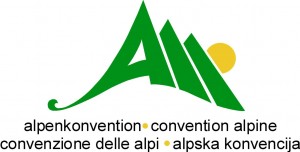The Alps Macro-Region: Toward an EU Strategy for the Alpine Region
 After 23 years of commitment to a sustainable development of the Alps, the Alpine Convention is facing a new challenge that offers opportunities but also creates some concerns. Indeed, on December 19, 2013 the European Union decided jointly with Alpine states and regions to establish an Alpine Macro-Region. Already two similar Macro-Regions exist around the Baltic Sea and along the Danube. As its name indicates the perimeter under consideration will be much larger than that of the Alpine Convention. It will include vast regions such as Rhône-Alpes, PACA, Lombardy and Bavaria, for example, but also large urban centers such as Lyon, Milan, Vienna and Munich bringing along their respective political and economical weight.
After 23 years of commitment to a sustainable development of the Alps, the Alpine Convention is facing a new challenge that offers opportunities but also creates some concerns. Indeed, on December 19, 2013 the European Union decided jointly with Alpine states and regions to establish an Alpine Macro-Region. Already two similar Macro-Regions exist around the Baltic Sea and along the Danube. As its name indicates the perimeter under consideration will be much larger than that of the Alpine Convention. It will include vast regions such as Rhône-Alpes, PACA, Lombardy and Bavaria, for example, but also large urban centers such as Lyon, Milan, Vienna and Munich bringing along their respective political and economical weight.
Ideally the goal is – obviously – to balance development and protection in accordance with the 2020 Strategy of the whole Union. The new strategy is based on three pillars: 1) ensure growth and sustainable competitiveness through mutual solidarity between cities and mountains 2) promote an ecologically balanced territorial development by favoring soft mobility and a stronger cooperation in science, services and infrastructure 3) sustainably manage energy, natural and cultural resources while protecting biodiversity and natural areas. States and regions negotiators continue to work on the EUSAR Strategy in the Steering Committee (on the basis of an outline (also called Resolution of Grenoble) approved last October in Grenoble), in which the Alpine Convention and the Alpine Space Program (EU funds for transnational projects )
are observers only. A public consultation is planned for the summer of 2014. For the moment the participation of NGOs, representing the civil society, is not yet defined. CIPRA, with its 60 years of intensive work for the Alps, and other Alpine networks such as proMONT-BLANC seem to be in good position to be accepted as the « to be established » working groups members, but a participation in the Steering Committee is not guaranteed yet. The implementation of such a top-down defined strategy may encounter difficulties as it is the case for the Danube.
The challenge for the Alpine Convention is also the valuation, by the future macro-region, of its multiple experiences acquired in the protection of biodiversity, natural resources (water, energy, forests, etc..,) and ecosystem services, transport, tourism, culture, etc..,
In this context, what are the challenges for the tri-national Mont Blanc, the roof of the Macro-Region and of the entire European Union? Will it be finally better protected on its three sides and will it evolve faster toward a benchmark model of international sustainable development? And will the EMB Strategy for the Mont-Blanc converge with the European Strategy for the Alpine region?
Anyway, the working groups addressing these strategies have a huge task ahead of them and deserve an increased level of commitment from all involved parties. (BE, BM)